Ventilation Mechanism
This lesson covers:
- What ventilation is
- The muscles involved in ventilation
- The process of inspiration
- The process of expiration
What is ventilation? Ventilation, or breathing, consists of inspiration (breathing in) and expiration (breathing out). It allows air to enter and leave the lungs, providing the body with oxygen and removing carbon dioxide. |
Muscles involved in ventilation The ribcage is made up of bones called ribs that enclose the thorax - the cavity where the lungs are located. In mammals, ventilation is controlled by muscles that change the volume of the thorax. When the muscles attached to the ribcage contract and relax, they move the ribs to change the volume in the thoracic cavity. This affects the pressure in the lungs and controls ventilation. |
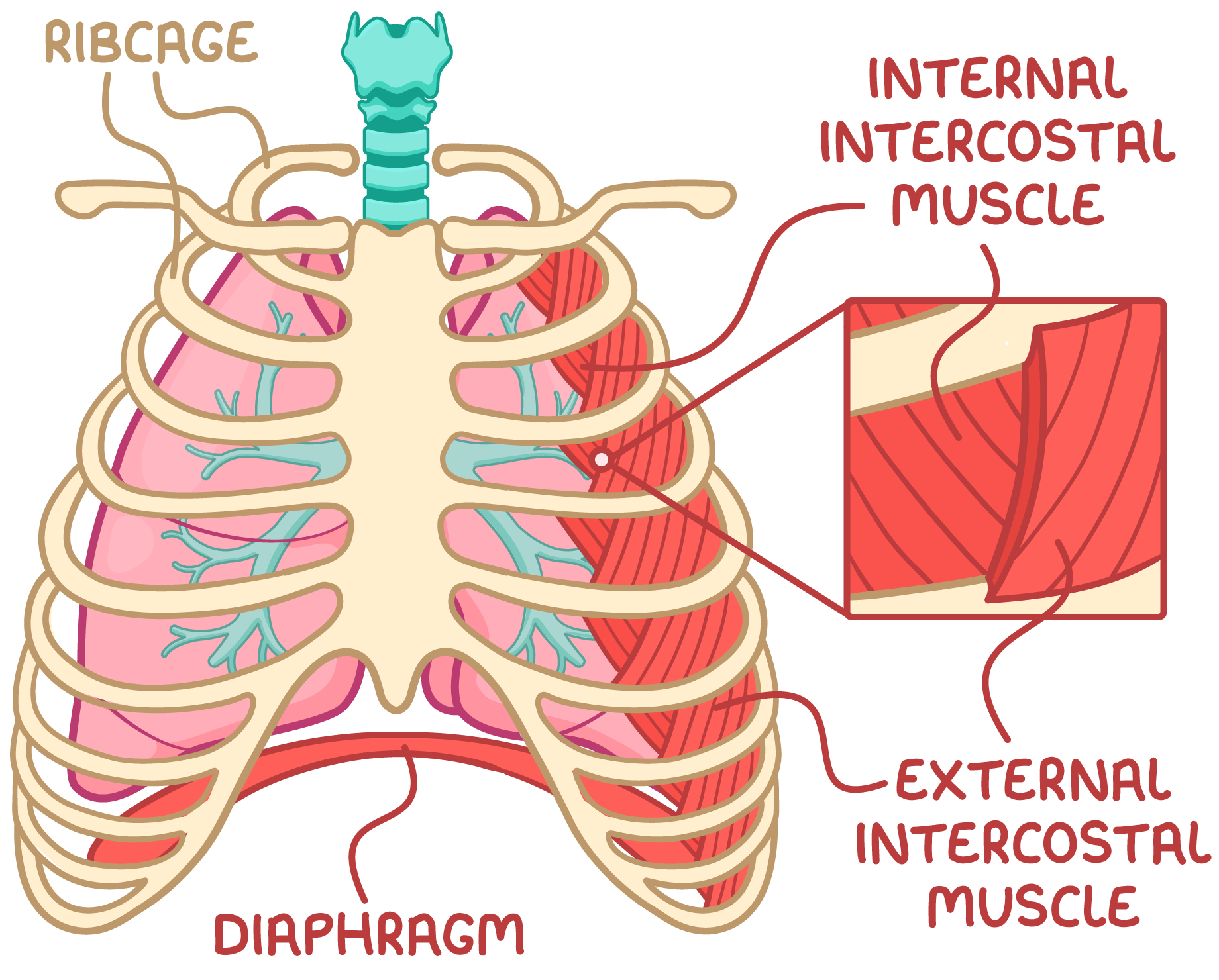 There are three sets of muscles that act on the ribcage:
|
The external and internal intercostal muscles have opposite effects on the ribcage. The external muscles expand the ribcage during inspiration, while the internal muscles shrink it during expiration. |
Inspiration Inspiration is an active process requiring energy for muscle contraction. |
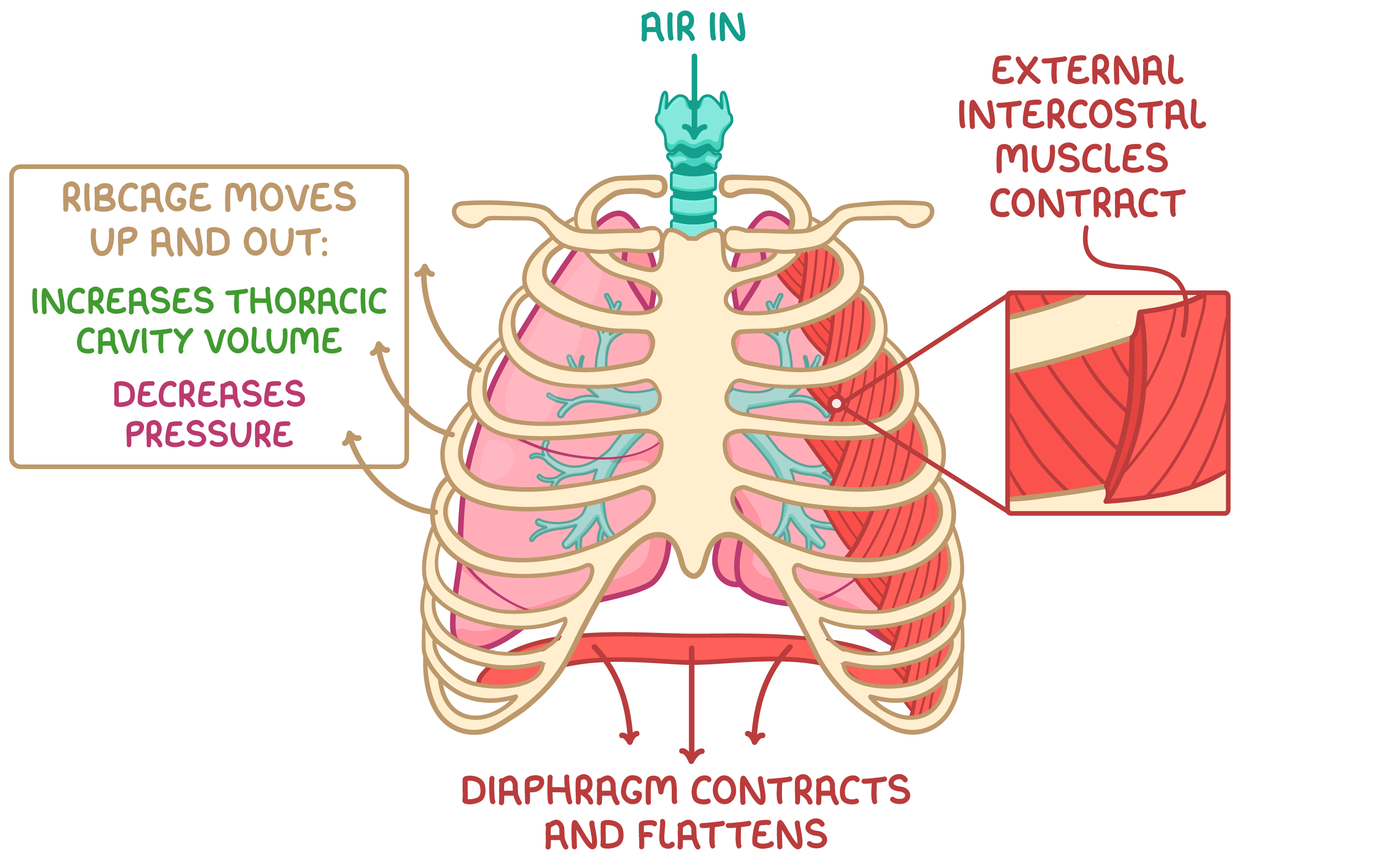 During inspiration:
|
Expiration Normal expiration at rest is a passive process so it does not require energy. However, expiration can be forced by contracting the internal intercostal muscles to actively pull the ribcage down and in, forcing more air out. |
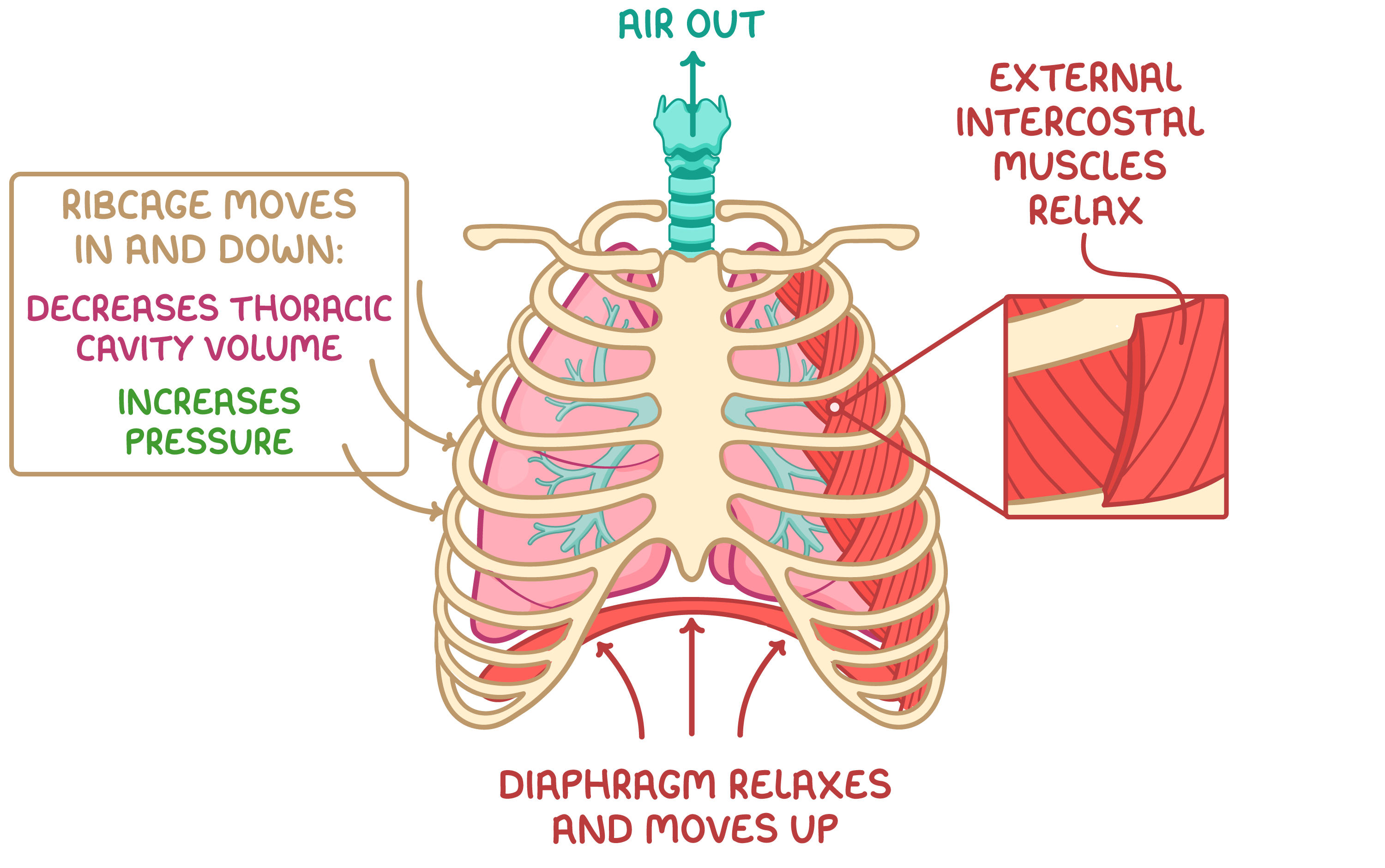 During expiration:
|
Elastic fibres in the alveoli also shrink and recoil back to their original shape when the thorax volume decreases. This increases the pulmonary pressure and helps to push air out of the lungs. |
Which of the following parts of the respiratory system contain rings made of cartilage?
trachea
intercostal muscles
diaphragm
alveoli
|
Which of the parts A, B, C or D, represents the intercostal muscles?
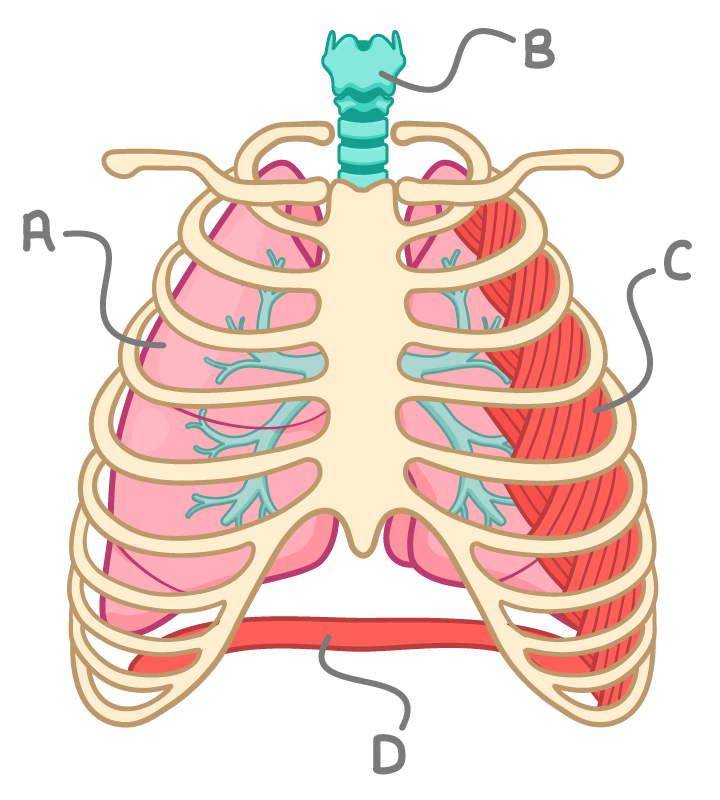
A
B
C
D
|
What is the name of the structure labelled B?
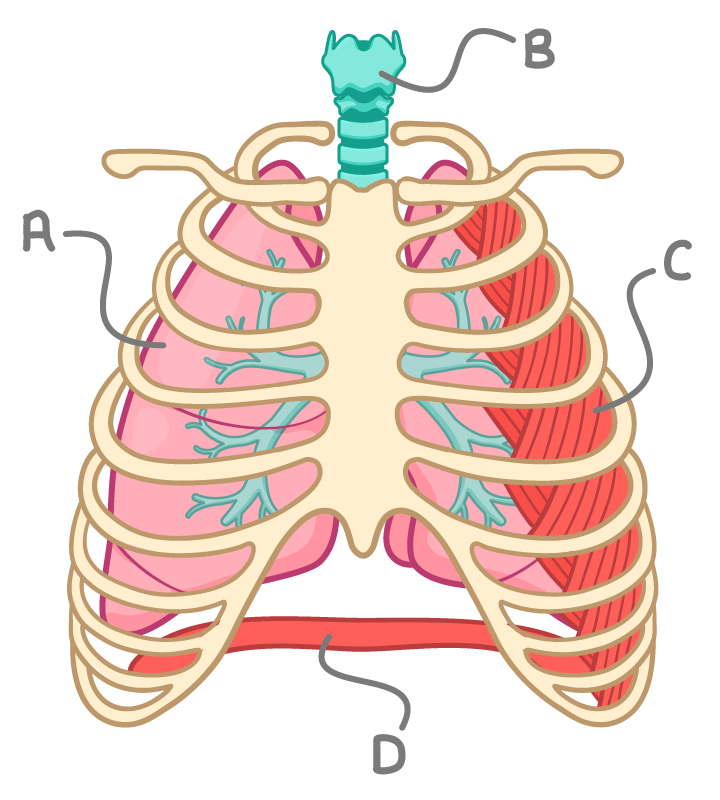
|
Which one of the following protects the lungs?
diaphragm
cranium
trachea
ribcage
|
Which of the parts A, B, C or D, represents the diaphragm?
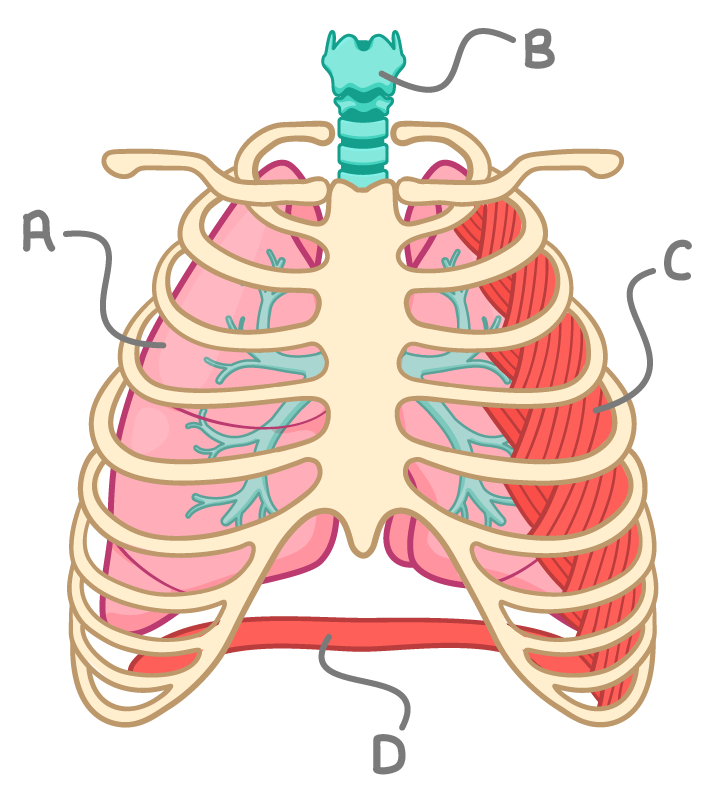
A
B
C
D
|
What happens to the lungs during inhalation?
They contract
They push up the diaphragm
They produce oxygen
They expand
|